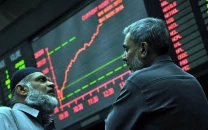Energy sector: possible priorities of new govt
Most immediate task is to identify potential for ramping up oil, gas production

We have a new government. Many causes are being assigned to the fall of the previous one. One theory is that it lost the support of the “establishment”, while the other is that the US getting antagonised by ex-PM’s visit to Russia and then orchestrating the ouster.
There is some substance in the first, whereas the second seems far-fetched. Russia has already been offering cooperation to us in the energy sector since at least 2009.
Even in April 2021, its foreign minister visited us, declaring that he is carrying a blank cheque. This visit was preceded by a visit in February 2019 by a high-level Russian delegation intending to invest $14 billion in the energy sector and another in December 2019 with a delegation of 64, led by the trade minister, with similar objectives.
Nothing materialised from those visits, but we are ourselves to blame for that; not the West. Hence, the PM’s visit to Russia may have caused some annoyance or even consternation in the West, but not more than that. So, in my view, it is primarily the previous government’s governance challenges, which proved to be the cause of its fall. Energy sector stands out the most in this respect, where foot-dragging on critical decisions and ad hocism were noticeable throughout.A glaring example of the said ad hocism is the repeated change of guard at the very top with three energy ministers and in parallel three SAPMs replacing each other in a short period of three and a half years.
Policies versus performance
Though PTI’s manifesto and policies were replete with promises of professionalisation and autonomy of state-owned enterprises (SOEs) by transferring their ownership to a wealth fund, the situation gradually worsened after it assumed power in August 2018. The wealth fund they formed never took off. As to the corporate boards, there is a negligible percentage of directors fulfilling even the minimum required PSC rules’ criteria.
A comparison of a few multinational energy public sector enterprises (PSEs) with some in Pakistan tells us that out of 59 directors of six such MNCs, more than 40 have extensive relevant high-level experience as compared to less than 10 out of 90 in the Pakistani sample.
The manifesto promised revival of oil and gas exploration, however, the era showed a marked reduction in the activity; eg on average we drilled 47 exploratory wells per year from 2013 to 2018 while only 29 wells per year were drilled from FY19 till FY21.
Also, the sector spent 35% lesser on E&P activities in FY21 vis-a-vis FY18 and 45% lesser on the exploration component. Similarly, we observe an alarming reduction of 28% in the recoverable reserves of oil in FY21 vis-a-vis FY18 – an indication of the gap in reserves’ replacement ratio.
Though we do observe a net increment of 1.5 trillion cubic feet (tcf) in FY21 vis-a-vis FY18 in the recoverable gas reserves, we still observe a production decline of 500 million standard cubic feet per day (mmscfd) between the two reference years.
Similarly, we observed a reduction in the production of oil by 15% during the period, although, with a little effort, the decline could have been arrested by at least 10% for oil and gas both. In view of the above and associated factors, the share prices of the major exploration and production (E&P) PSEs took a sharp plunge during the period, ie in one case by five times and in another by three times. On the utilities’ side also, despite major increment in prices, the circular debt continued to mount and share prices declined by more than five times. The petroleum sector’s circular debt alone rose to Rs1.6 trillion during the period.
Primary causes for the sluggish activity appear to be capacity gaps at the top including the PSEs’ boards and exploration blocks’ bidding rounds mostly failing to attract any MNC. It goes without saying that I continuously tried to contribute through presentations, articles and letters, but it all went unnoticed.
Though the ordeal I went through during the past more than three years is not a subject of this article, it hurts more that it happened under a government which espoused merit and transparency. A professional of proven track record was forced to sit out on frivolous pretexts.
Major challenges
They can be listed as follows: a) Reserves’ replacement required sustained focus on the E&P activity. Also, known oil and gas basins stand exhausted and new ones need to be discovered, which necessitates professional capacity. The exodus of MNCs during the last 15 years has added to this capacity loss. As to PSEs, at least 50% of their profits come from the joint ventures operated by other operators, while their staff adds to 14,000 (one-fifth of Aramco’s staff contributing 14% of global oil production); an ample reflection of the given human capital’s capacity gaps. b) Our energy PSEs continue to operate mostly with no diversification. c) Failure to develop strategic underground oil and gas storages. d) Abnormal increment of two and three wheelers, due to shortage of public transport, resulting in an additional drain ($3 billion per year) on gasoline imports. e) Attempts for PSEs’ structural reforms hardly go beyond the already failed concept of unbundling. f) We failed to upgrade refineries to reduce furnace oil production, although LNG economics was based upon the oil’s replacement with LNG. g) Future of TAPI and IP (the raison d’être for ISGS) is still hazy, while LNG imports are projected to be 4 billion cubic feet per day (bcfd) by 2026 and LNG infrastructure’s limited capacity is already a bottleneck. h) Machike to Taru Jabba oil pipeline needs to be pursued on priority. i) Viable alternatives to piped gas are imperative, eg off-grid bio-methane modular plants.
Topping all the above challenges is the absence of any professional tier/ committee steering the energy sector. It continues to be governed by officials having hardly any subject knowledge or corporate management experience.
What is to be done?
The way this sector is being managed is simply untenable. Though time appears short for the new government, they can at least take the following strategic steps: 1) To benchmark their current status, initiate third-party performance audits and capacity mapping of a few large energy PSEs. 2) Constitute an advisory committee of 15 world-class energy professionals, who have successfully managed large value chains for assisting the government in driving the energy sector. In addition, the nomination of directors of SOEs’ boards and their performance evaluation may also be in their scope. The most immediate task for this committee may be to identify the potential for ramping up oil and gas production and implement the same on priority. The rest of their responsibilities can be developed from the above listed challenges. Only their effective resolution can lead to sustainable prosperity and genuine economic independence for the country.
The writer is a petroleum engineer and an oil and gas management professional
Published in The Express Tribune, May 2nd, 2022.
Like Business on Facebook, follow @TribuneBiz on Twitter to stay informed and join in the conversation.



















COMMENTS
Comments are moderated and generally will be posted if they are on-topic and not abusive.
For more information, please see our Comments FAQ